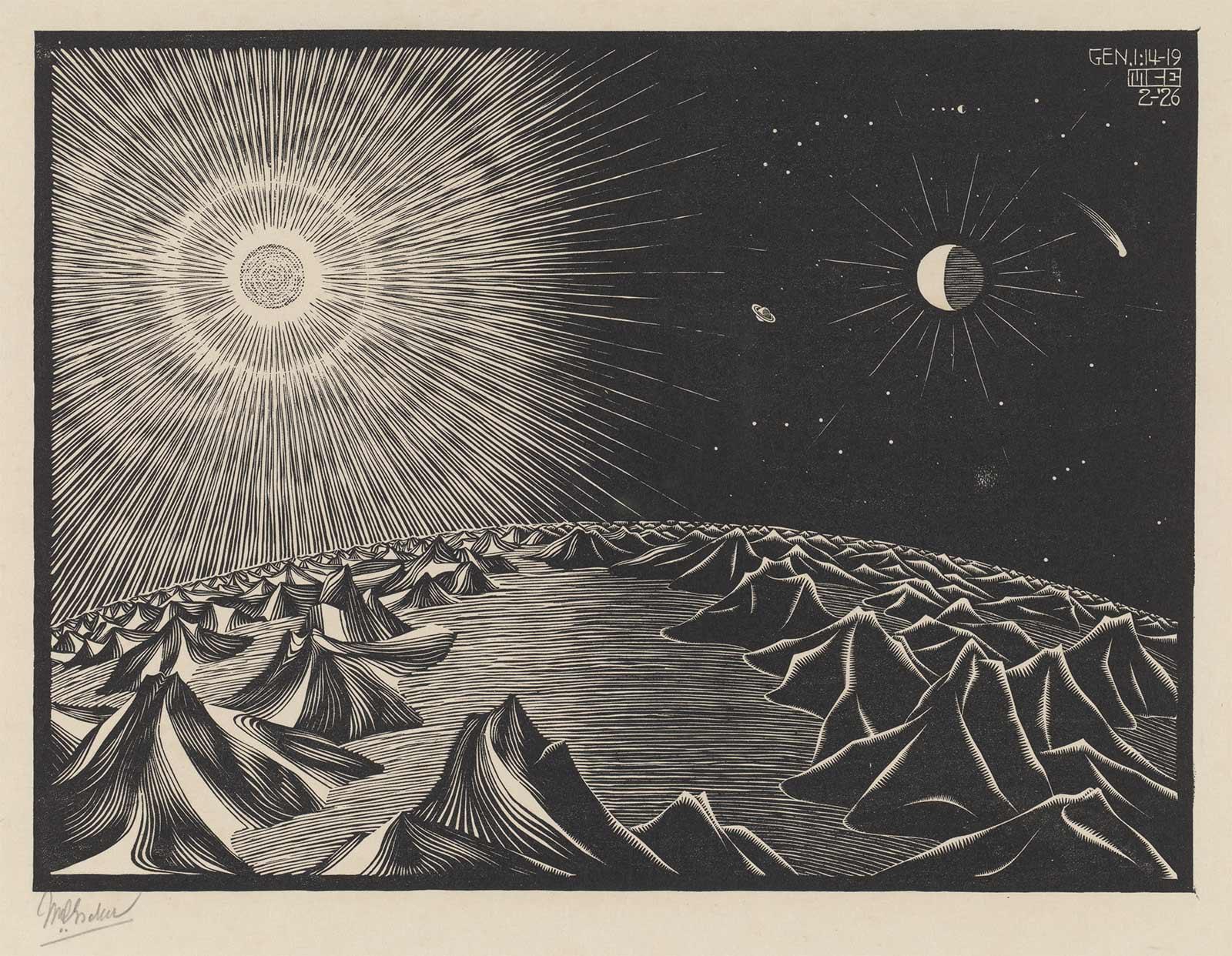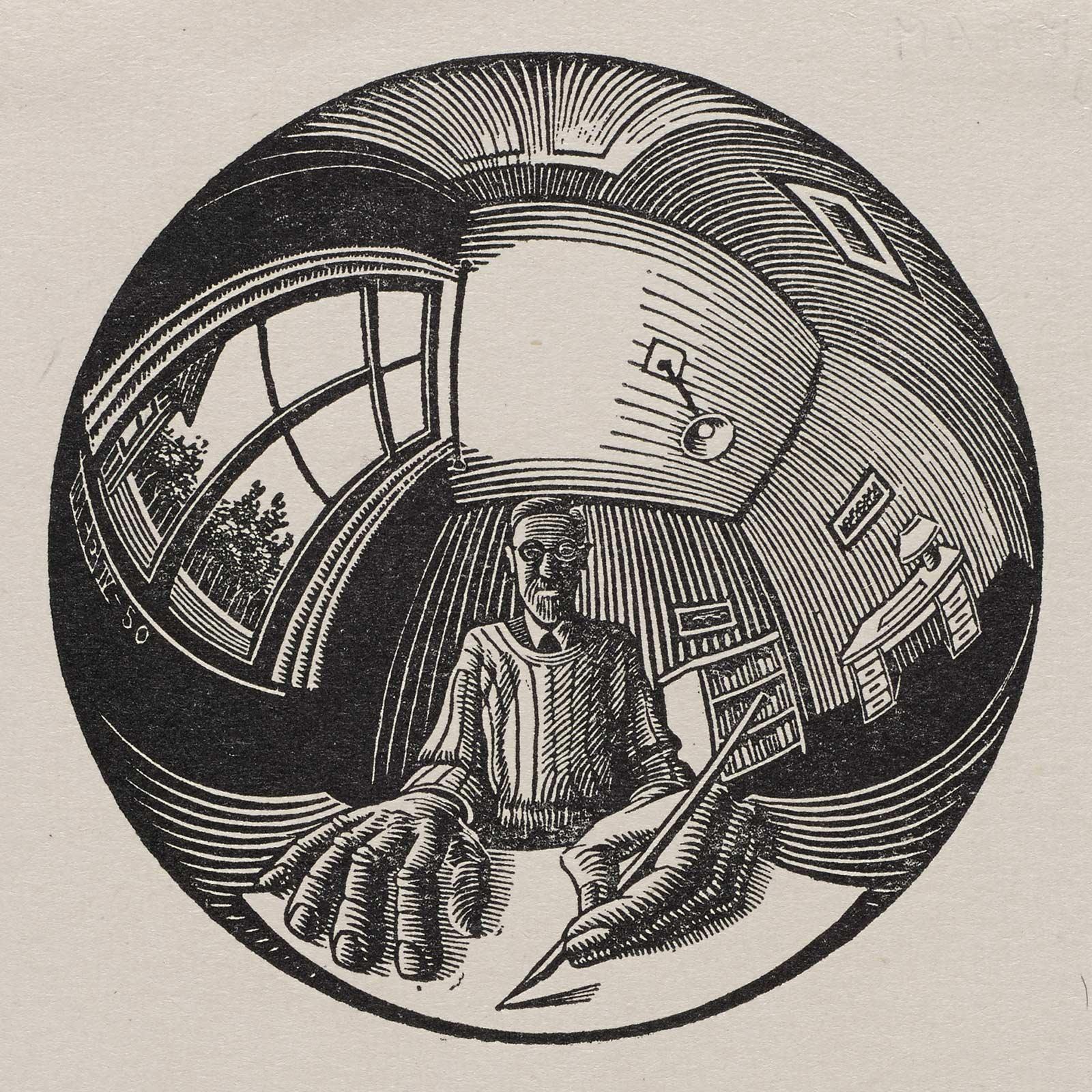

On 23 August 1996, the composer Jurriaan Andriessen, a descendant of a well-known family of artists, died. His grandfather Willem and his father Hendrik were also composers and his brother Louis still is. His sisters Caecilia (who passed away last week) and Heleen were also active in music. His uncle Mari Andriessen was a sculptor, his uncle Nico was an architect and cousin Jurriaan was a visual artist. Although he wrote a large, varied oeuvre encompassing symphonies and other orchestral works, an opera, ballet, church and chamber music as well as film music (e.g. for Dorp aan de rivier and De Aanslag by Fons Rademakers), his highly successful younger brother Louis would always overshadow him.
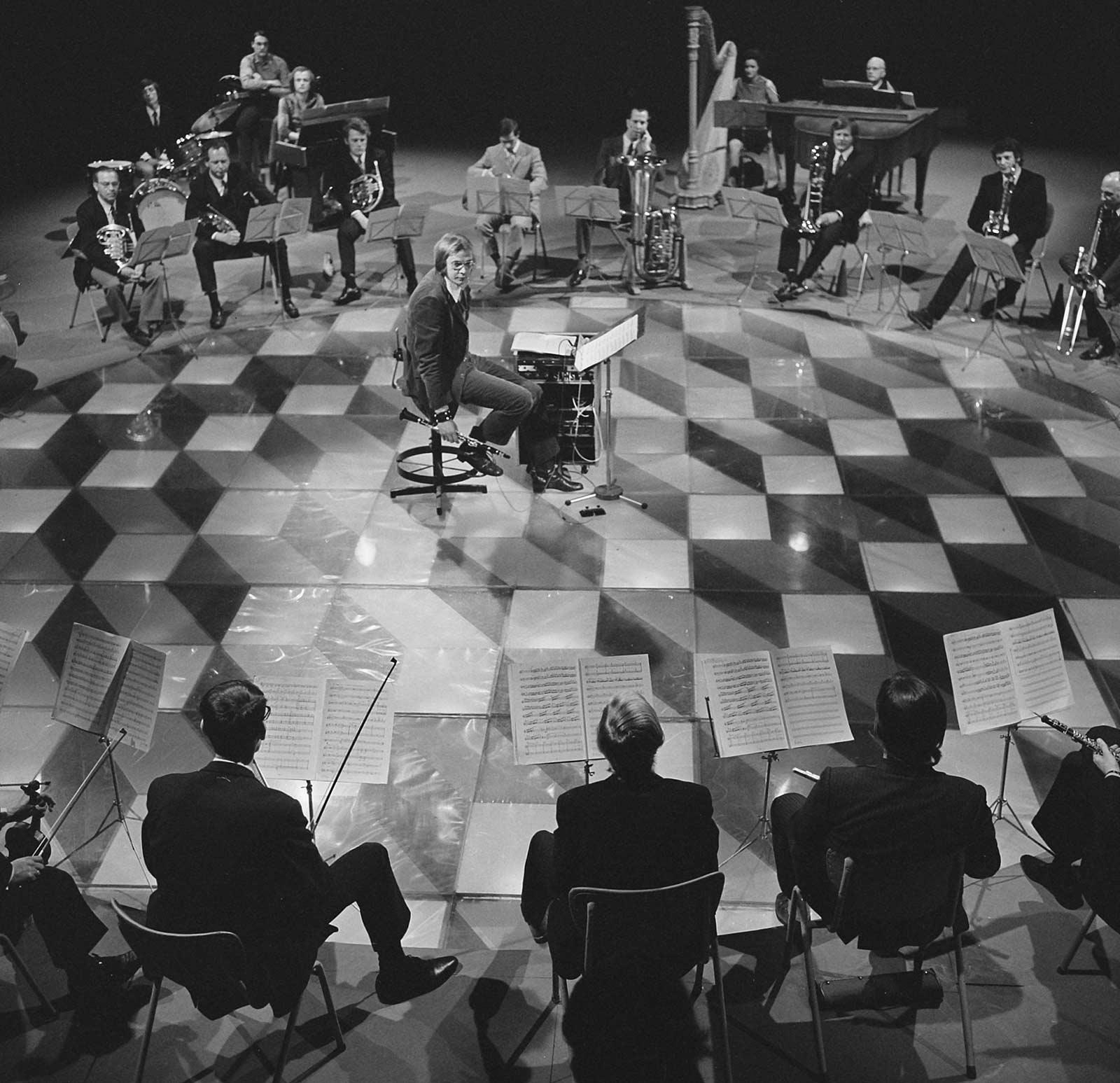
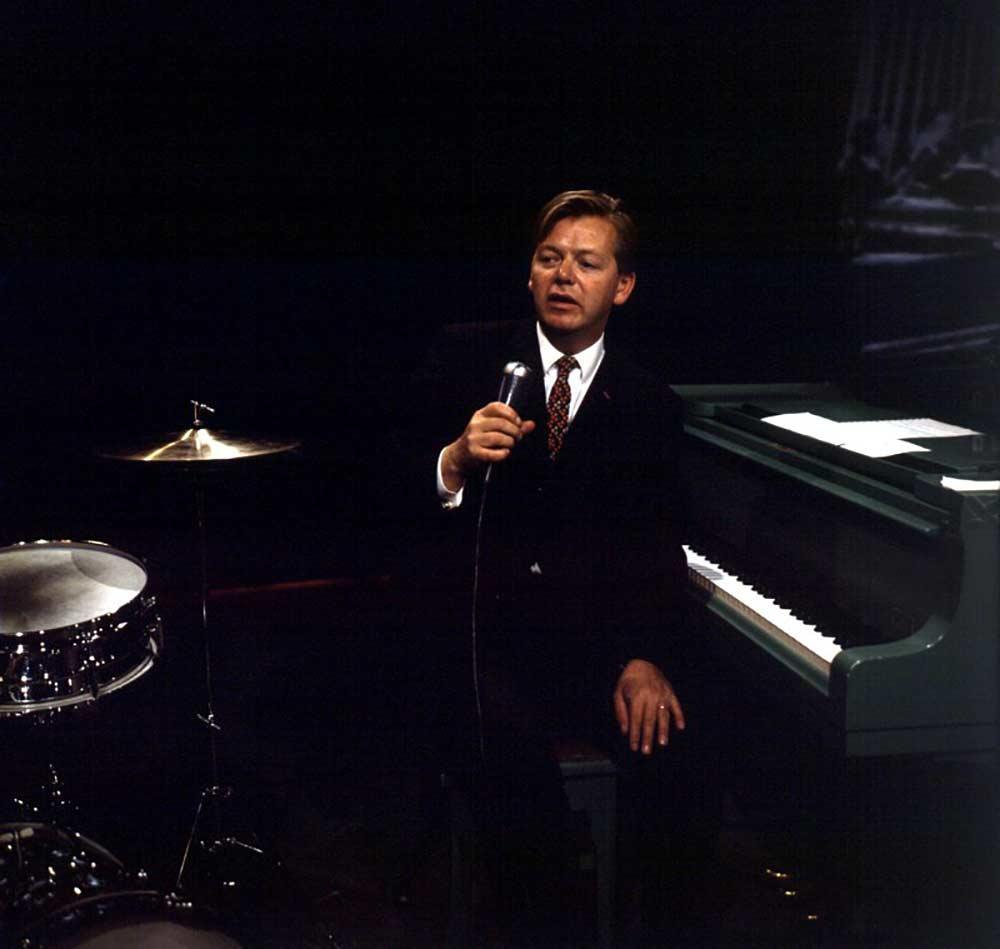
A good example of his versatility is the symphony Time Spirit, a musical theatre piece written for TV to which a clarinettist is put centre stage. A symphony orchestra, ballet dancers and the then emerging pop group Focus (with Thijs van Leer) surround this central figure. The symphony was accompanied by 34 slide projections of prints by Escher. Although the graphic artist had said no to Mick Jagger early in 1969 (he wanted to use a work by Escher for an album cover by The Rolling Stones), Escher was sympathetic towards Andriessen’s project. In a letter to Gerd Arntz he wrote:
‘A nice, cheerful composer (not as crazy as his younger brother Louis), who is not as deep as someone like my cousin Rudolf Escher. This Jurriaan is crazy about my prints and is busy composing an orchestral work about it.’*
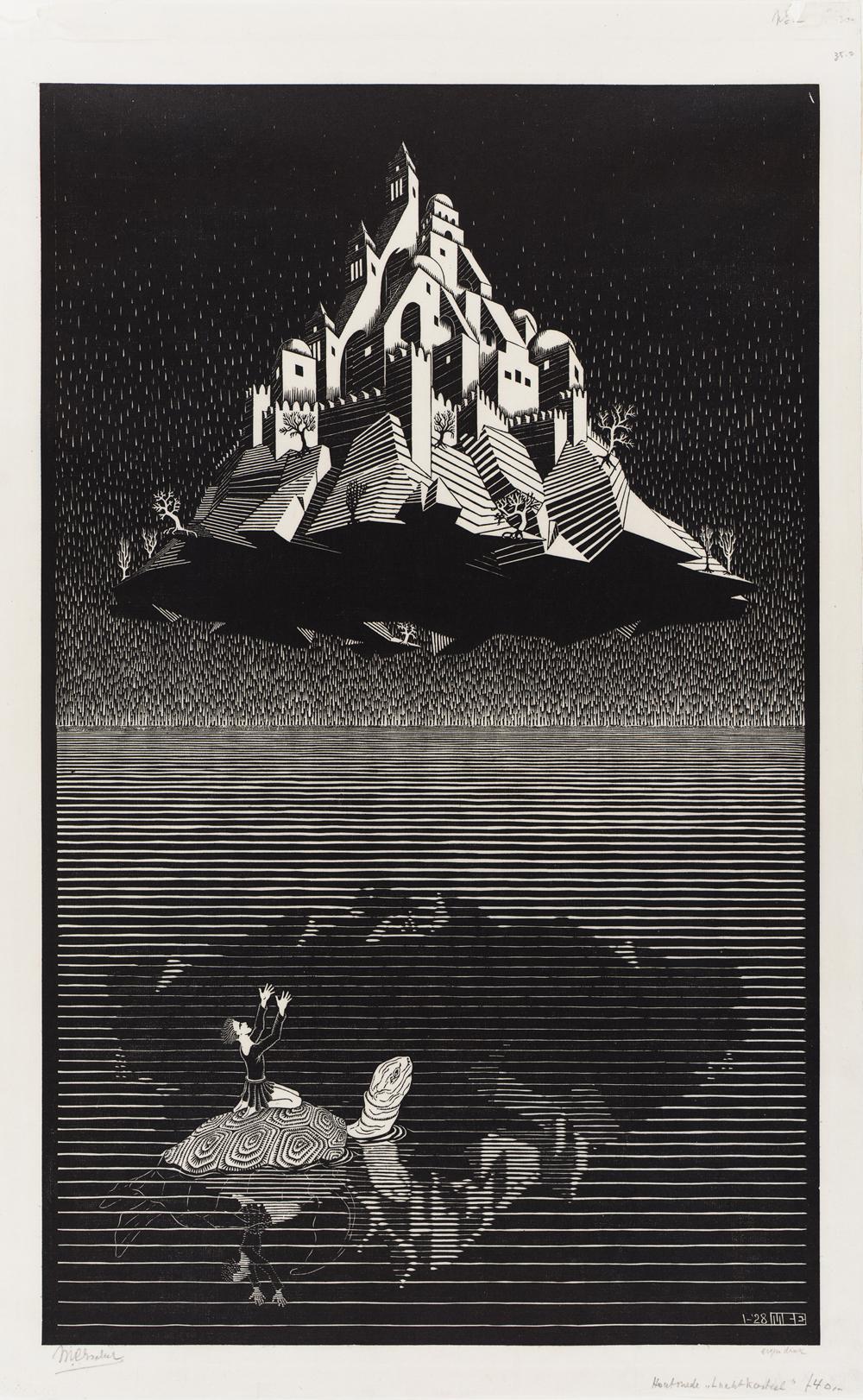
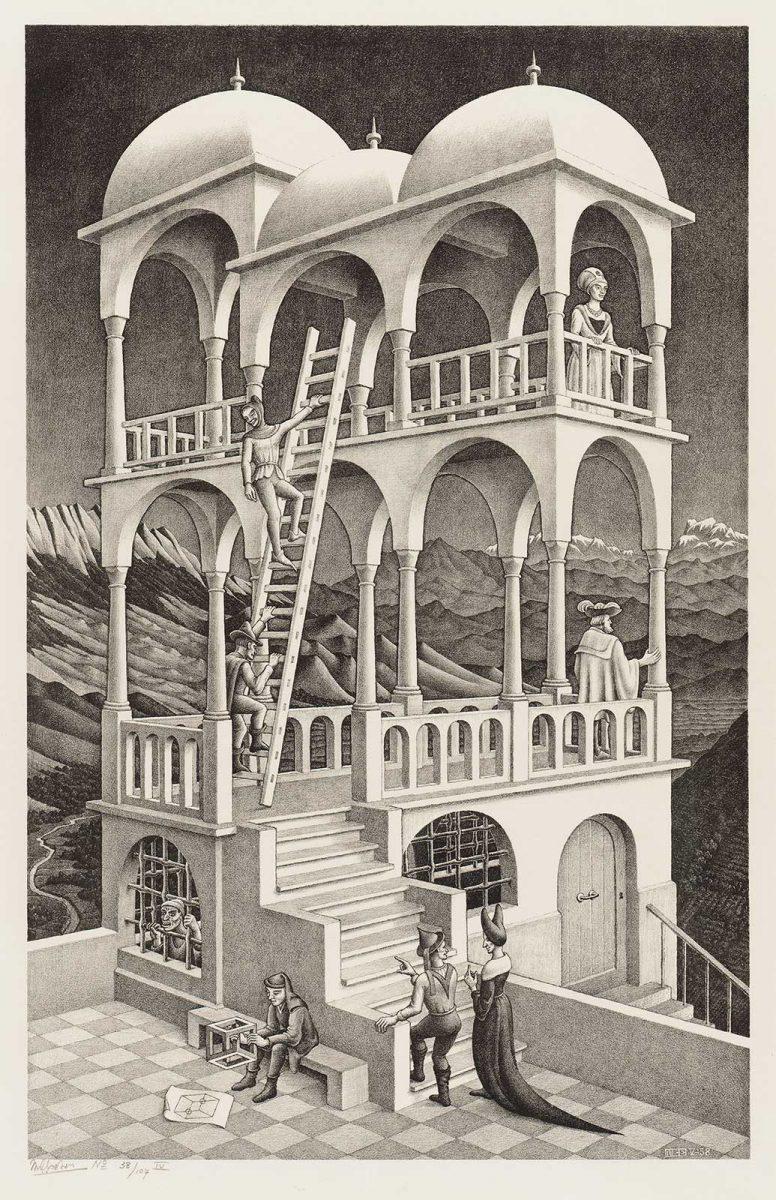
Time Spirit is a half-hour triptych in which the parts (entitled ‘Reptiles’, ‘Fish and Birds’ and ‘Encounter’) are interconnected by danced intermezzi. The clarinettist is the central figure whose loneliness is the main theme of the piece. ‘The personification of human life, from birth to adulthood. The circle of musicians expresses the surrounding world’, as Andriessen described it in an interview with De Tijd.
The premiere was staged at De Doelen in Rotterdam on 19 November 1970. Reprises would follow at Delft University of Technology and the Concertgebouw in Amsterdam. Escher was a guest at the premiere and wrote about it to son George and his wife Corrie:
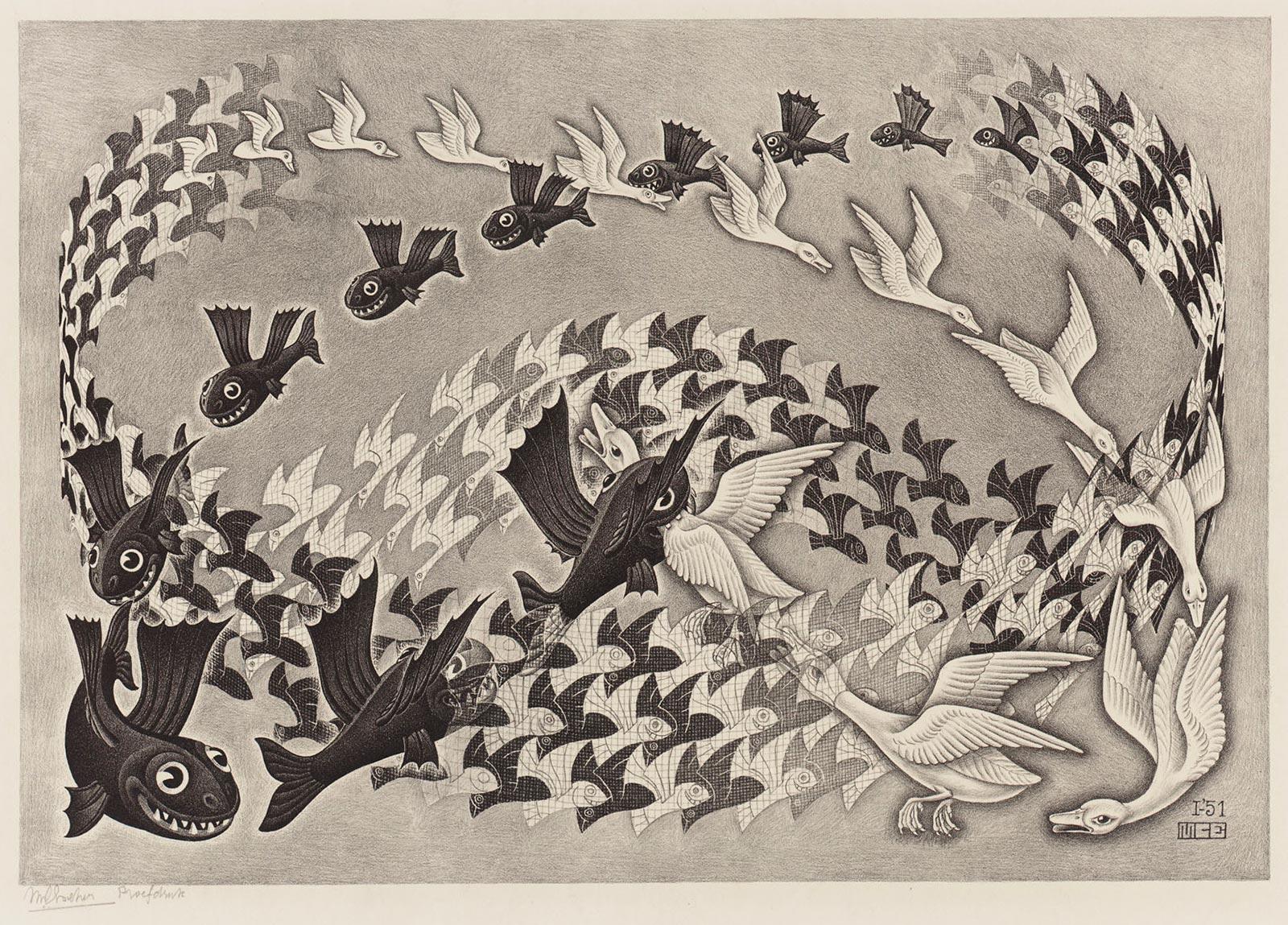
M.C. Escher, Predestination (Topsy-Turvy World), lithograph, January 1951
‘Well, I thought it was impressive! I never knew that my silly prints could be interpreted and presented so dramatically. Blending together sometimes 10 or more slides of the same print, on different scales, fish and birds growing ever larger, to a shrill climax (such as in ‘Predestination’, where you hear the poor bird squawking its fear of death, as it were, when the fish finally catches it). It gave me a lump in my throat and complete strangers who were also listening said it sent shivers down their spines. By stepping on a pedal, the solo clarinettist was able to electronically amplify the sound of his instrument to insane levels. Maybe it was on the verge of “kitsch”, but define kitsch’.**
Hence Escher was enthusiastic, but the music critics were divided in their opinions. Time Spirit was characterised as ‘surprising’ and ‘overwhelming’, though also as ‘kitsch’ and ‘audiovisual fuss’. The NCRV broadcasting organisation made recordings during the premiere and aired Time Spirit in January 1972. To the delight of Andriessen, who was keen for his work to reach as many people as possible
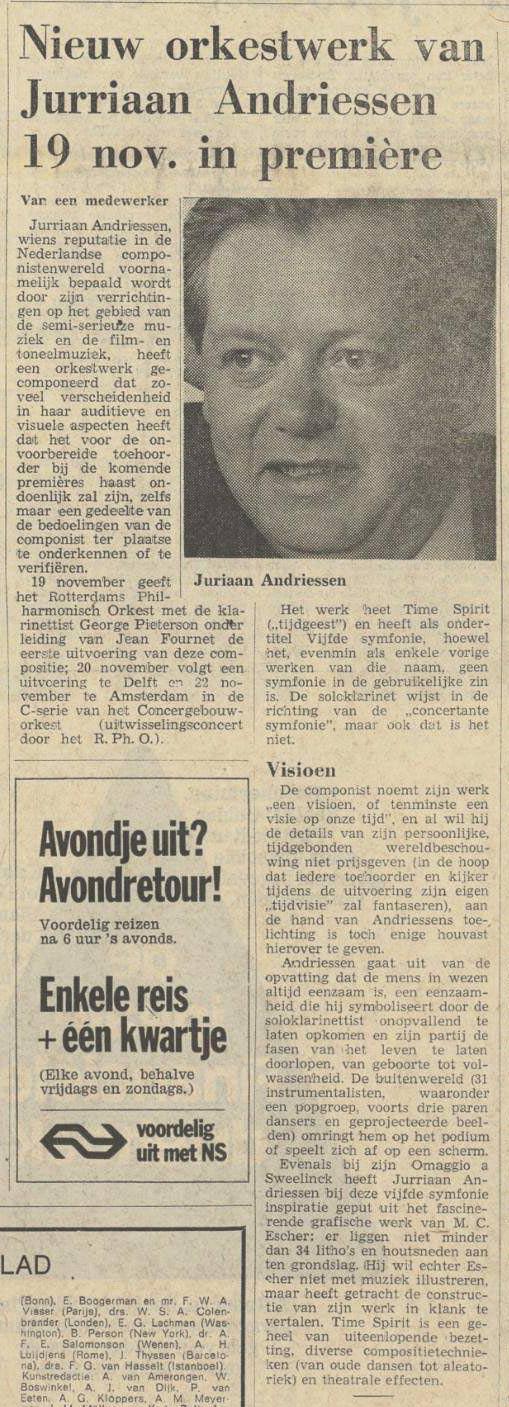
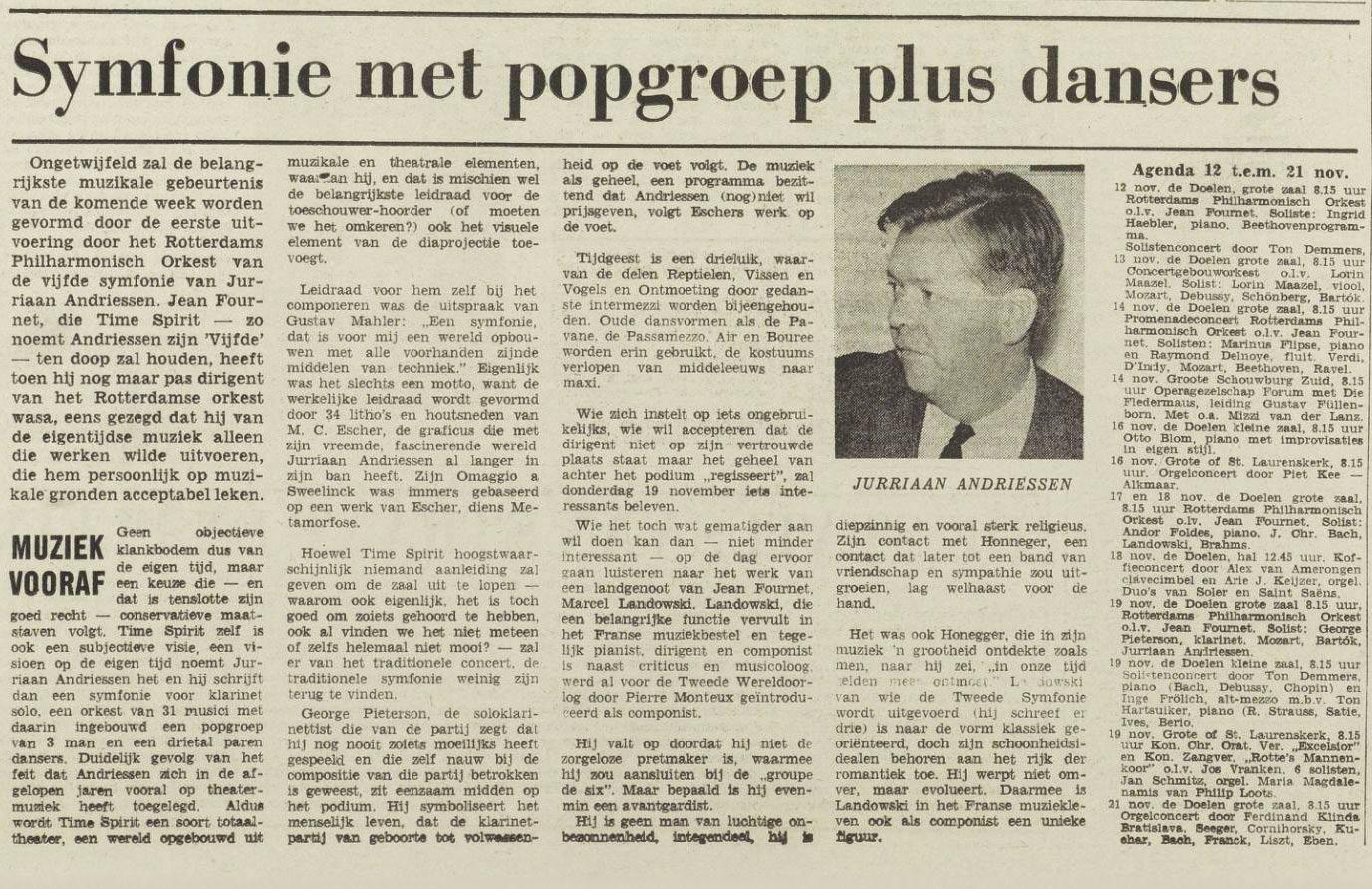
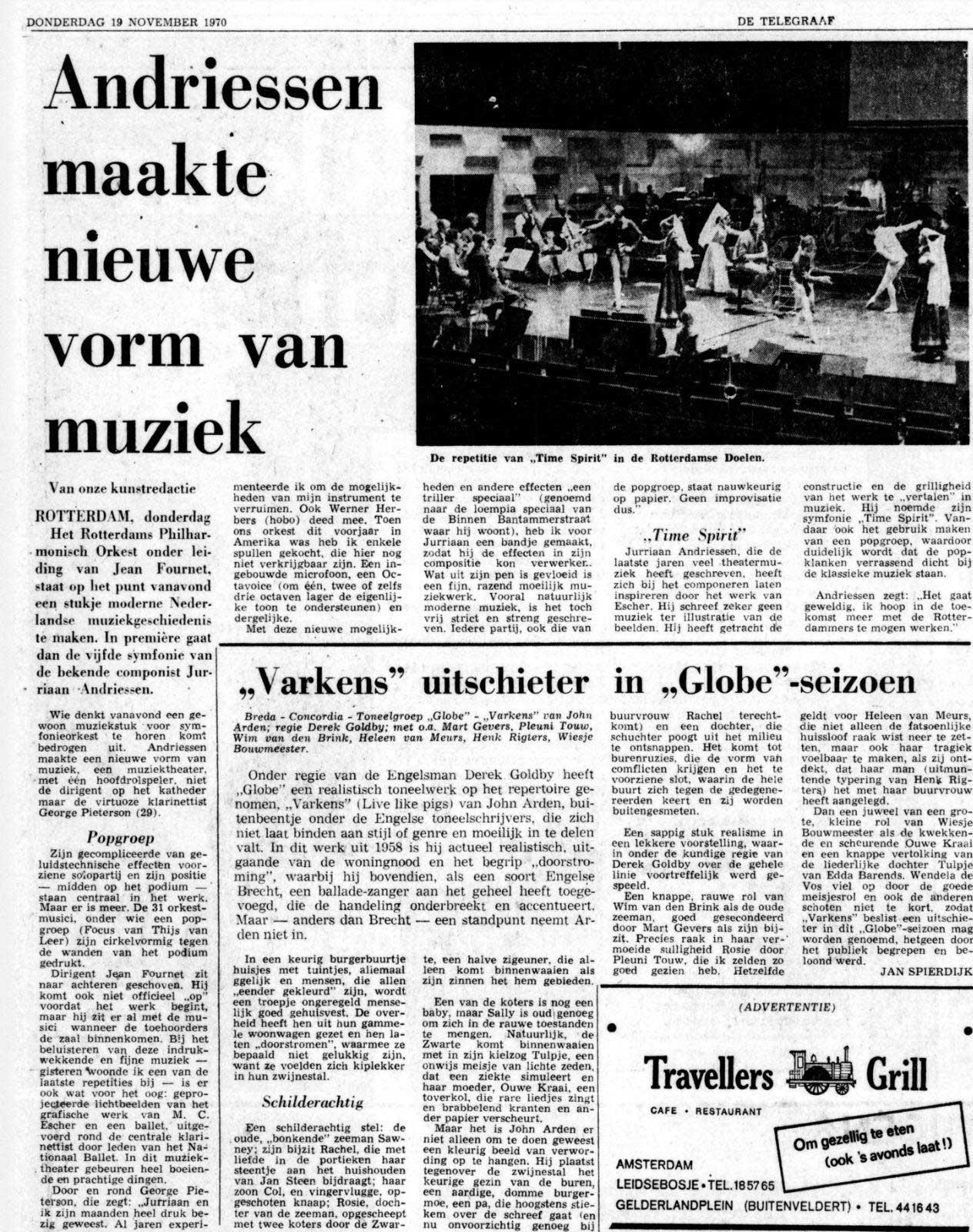
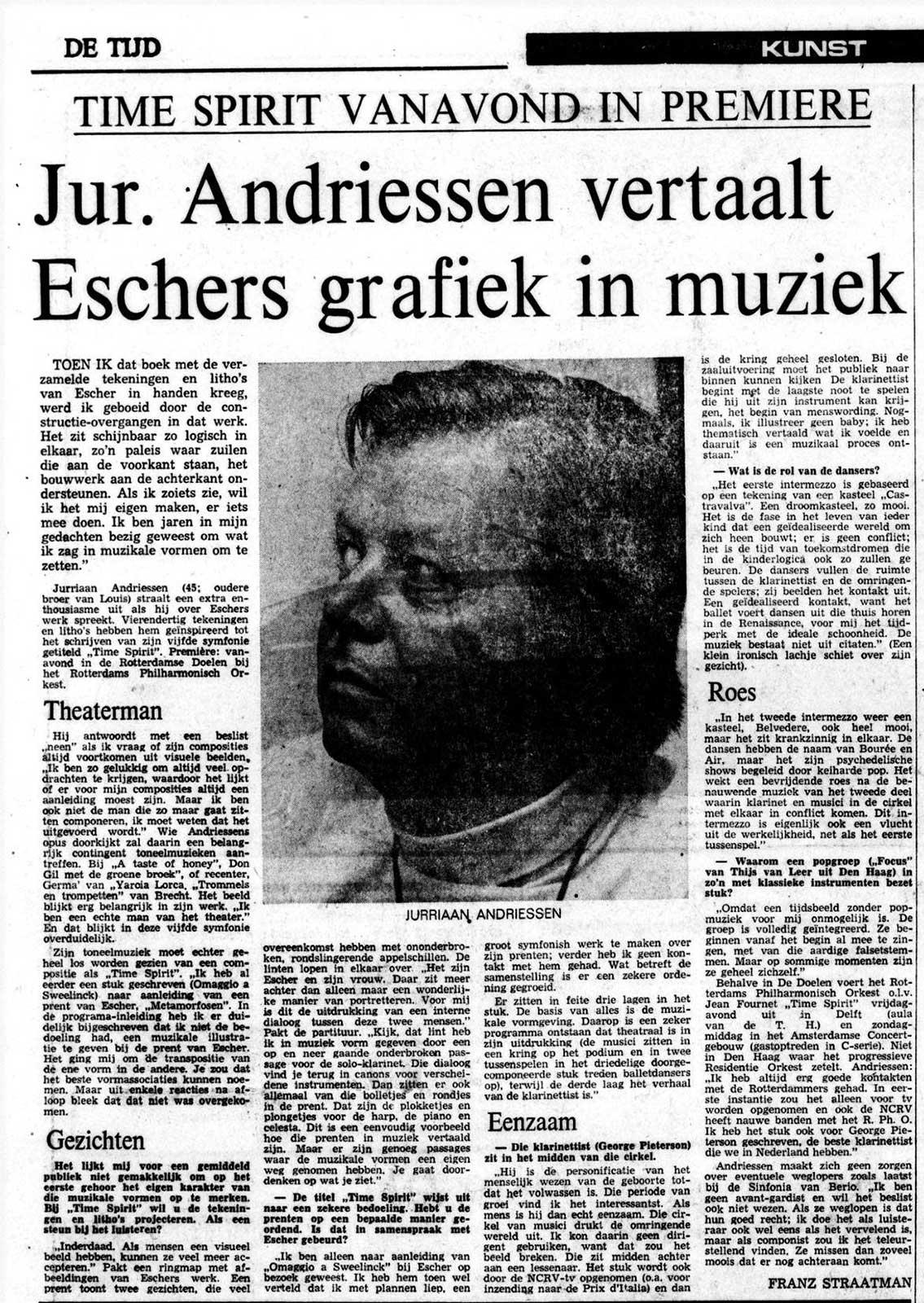
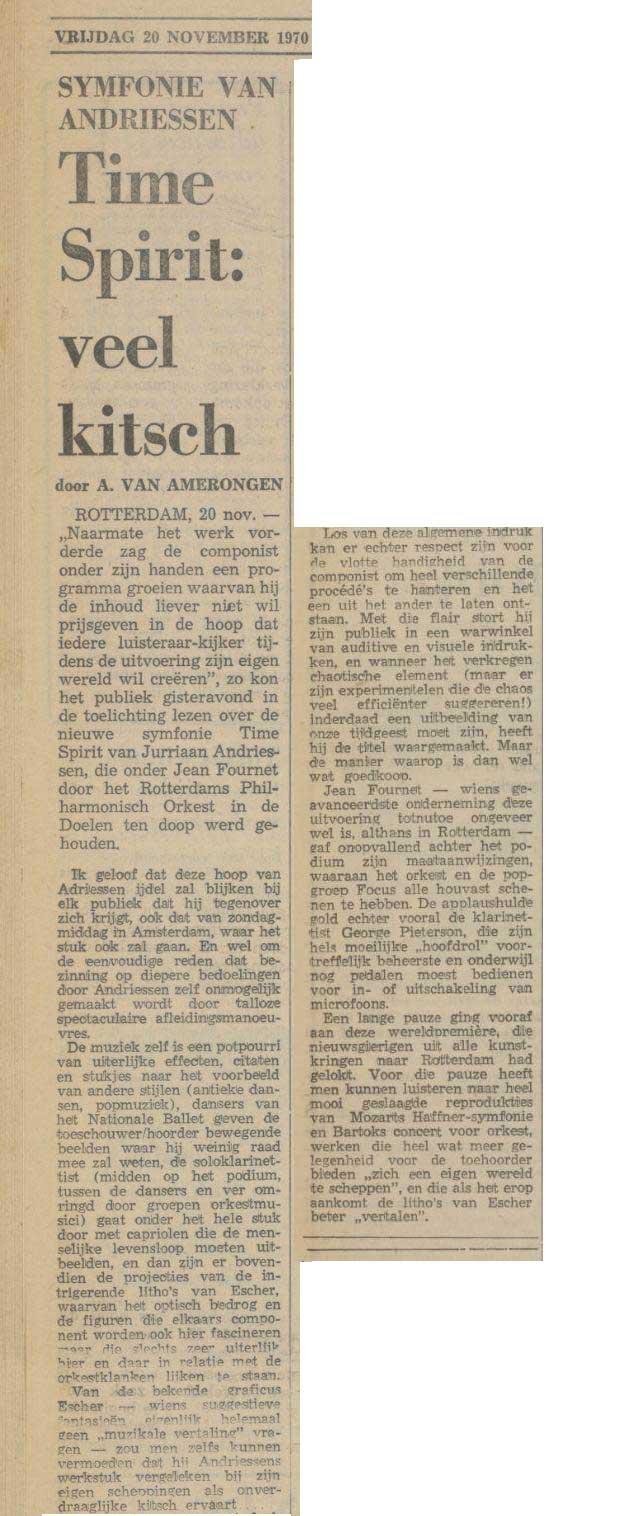
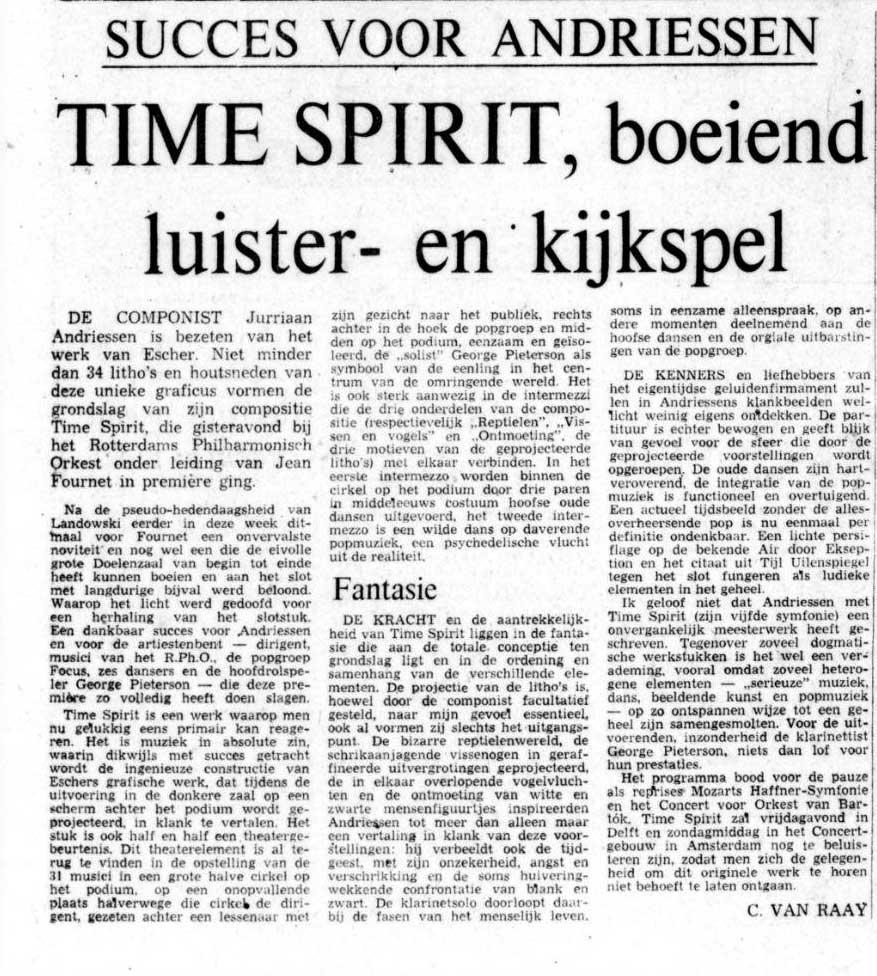
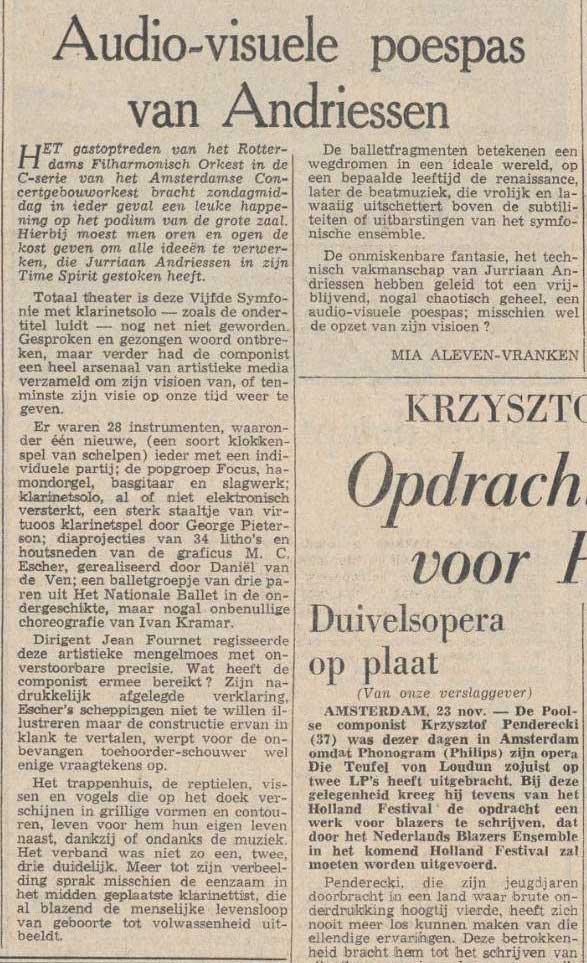
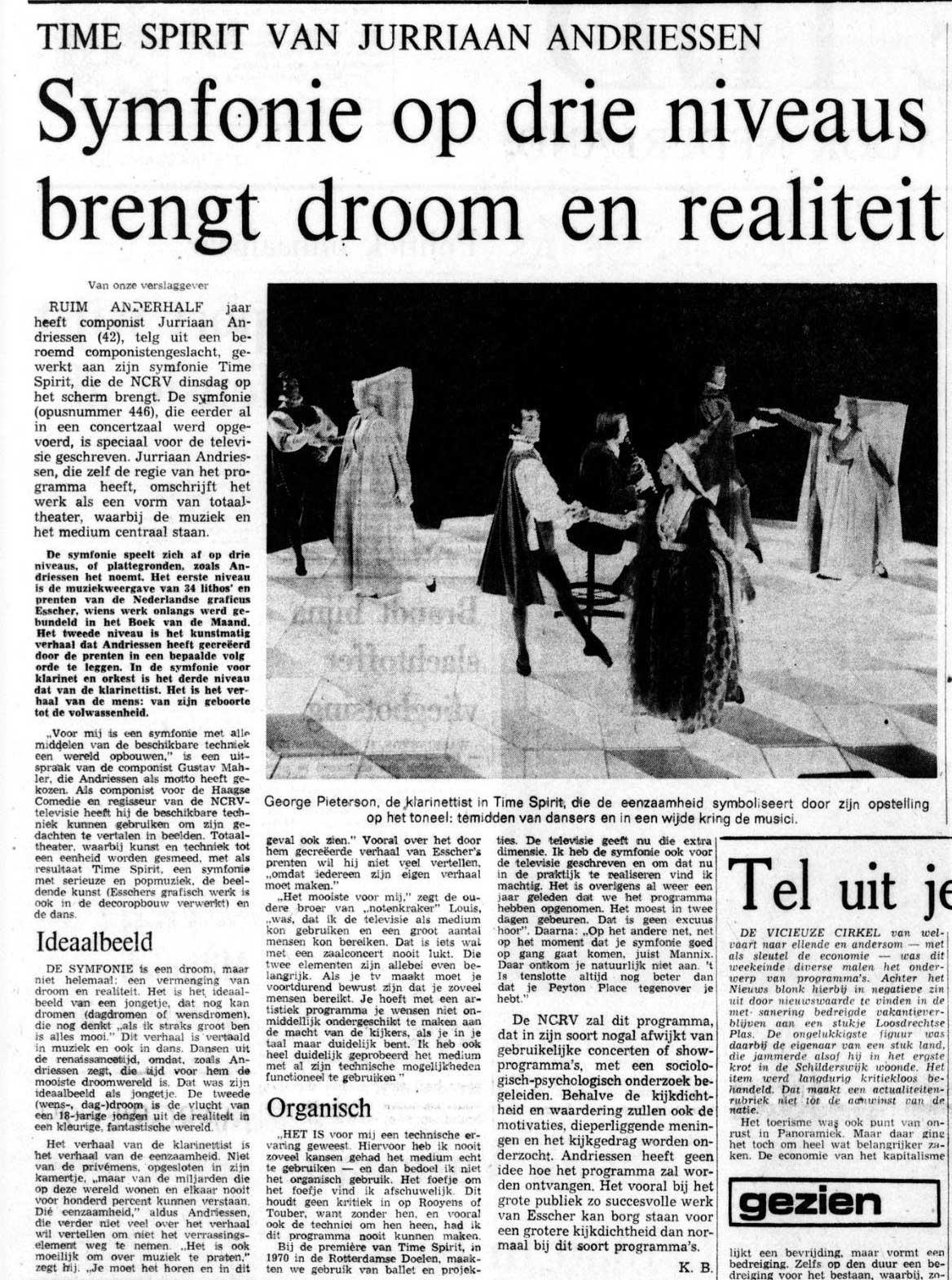
Source
[* and **] Wim Hazeu, M.C. Escher, Een biografie, Meulenhoff, 1998, page 494-495
More Escher today

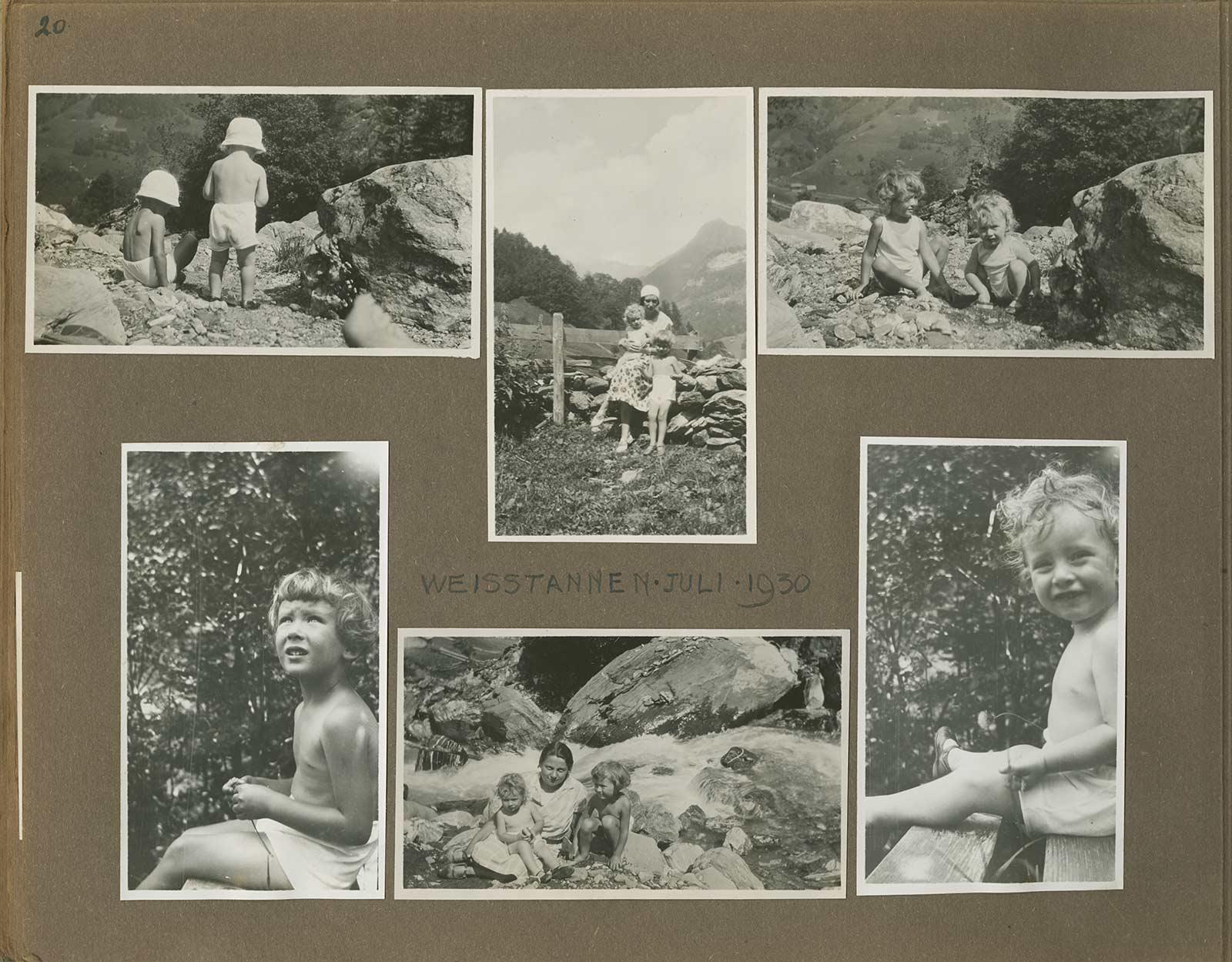
Summer 1930
